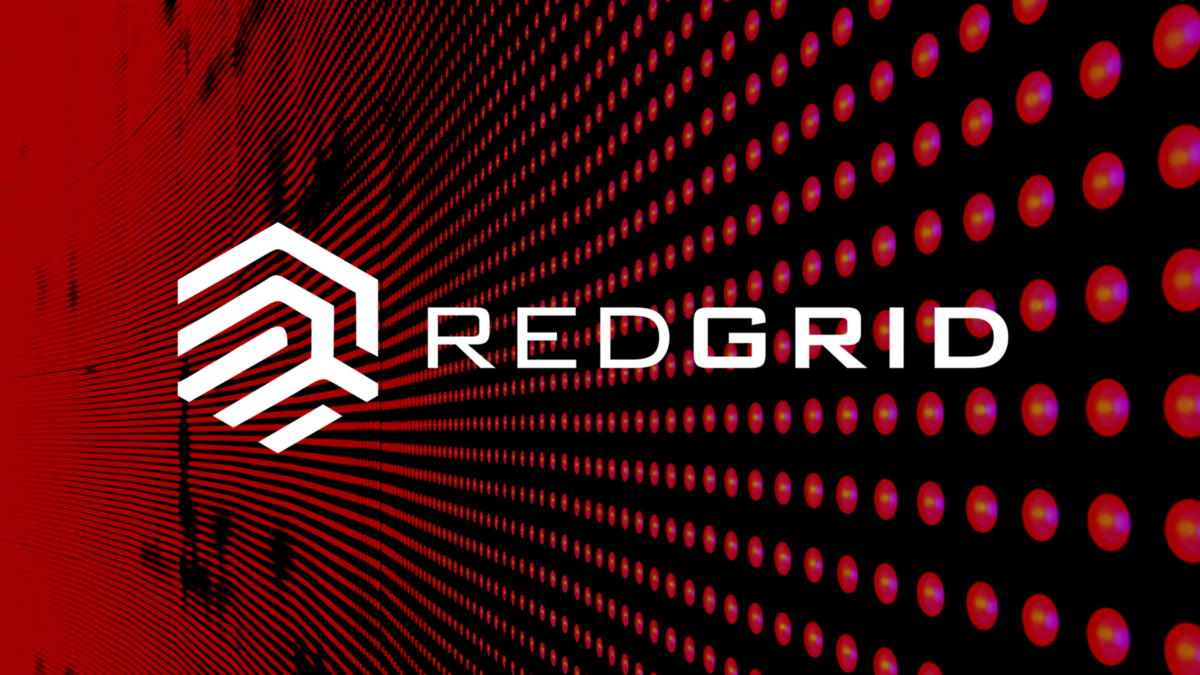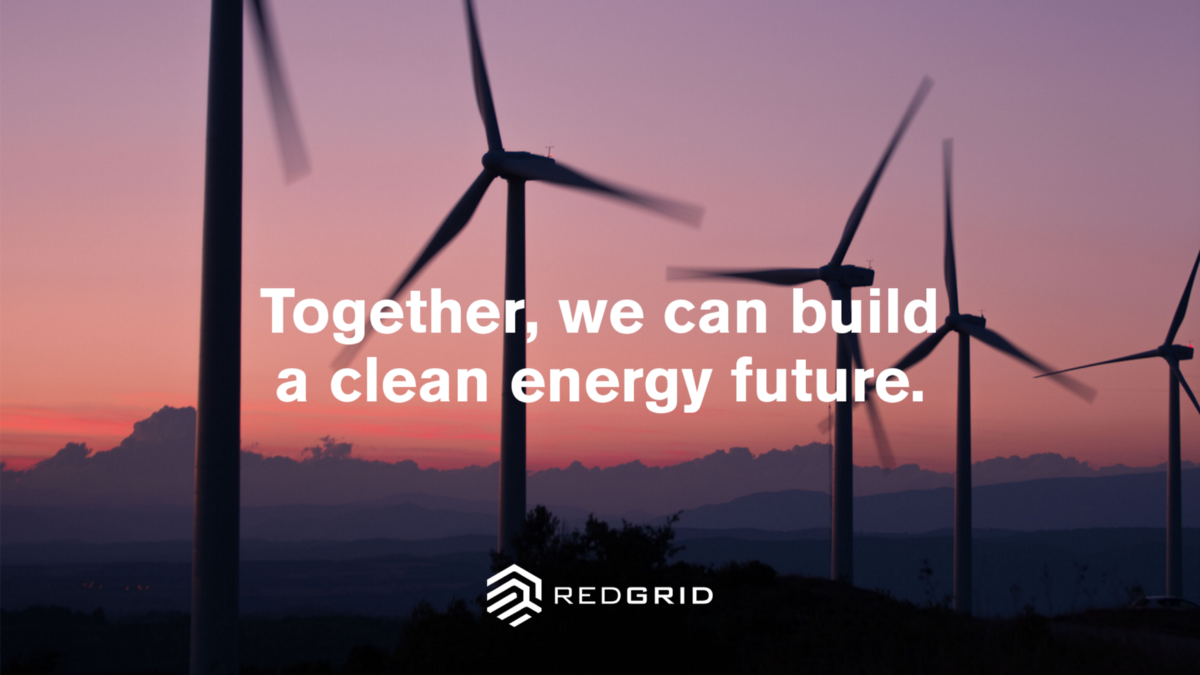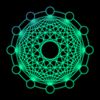An Ecosystem Update on Apps & Partners 02
RedGrid is building The Internet of Energy.
The Internet of Energy (IoE) is a software protocol that can be integrated into devices that produce, consume, or store electricity. It gives them the intelligence to communicate with one another and take collective action to unlock energy value for the individuals that own them and the network as a whole. Developers can then build applications on the Internet of Energy to harness this collective intelligence.
RedGrid will be building the first applications on the IoE. These include:
- Market Responsive Asset Optimization
- Network Demand Management Mechanism
- Machine-to-Machine Value Exchange
RedGrid will be open-sourcing the IoE protocol to enable developers to build the transformative energy technologies that will bring clean energy to everyone.
The following dialogue has been taken from our interview with RedGrid and addresses the who, what, and why of building on Holochain.

What is RedGrid?
We want clean energy for everyone. We currently have all these devices on our network that have so much potential, but they are not being used effectively because they are not coordinated. Renewable tech is becoming cheaper every day; it’s reached the point that in developing nations it is leapfrogging centralized generation. We have come to a point where we can have clean energy for everyone, it’s just a matter of making the network smarter to unlock its true potential.
What are you building?
We are building the Internet of Energy. What is the Internet of Energy? It’s a protocol that connects devices, both consumption and production, and gives them the intelligence to communicate. On top of that, we are building an application layer so that developers — including ourselves — can build applications using the potential of that connected network. It allows people with solar panels to trade energy with another person. It allows someone with a pool pump or air conditioner to respond to a market signal that says, “there is too much strain on the network, we’ll pay you ten dollars to turn off your air conditioner for half an hour.” These applications, and the many more that will be built by other developers, will help create a grid that is stable and clean for everyone.
Redgrid is a protocol — sometimes we refer to it as a platform. The analogy we use is that the Internet uses TCP/IP to send packets back and forth. We want Redgrid, the Internet of Energy, to be the TCP/IP for energy-connected devices. If you’re a company that starts an app or builds a website, you don’t even have to think about the fact that you’re using a protocol to run your application — you just run your website or make your application. We want that in the same sense, but for energy-connected devices on which they can build apps.
We want developers to be excited about the fact that they will be able to design for a network of connected devices.
Why would people choose RedGrid?
What differentiates this protocol is the fact that it is open and free to use. A lot of other companies who see the potential of creating a network are trying to keep it to themselves — keep it within their walled garden. We’re giving it out for free; we’re encouraging people to build on it. We are growing the network for future developers to build applications for, each time we get applications into homes and get devices on the Internet of Energy. We think that is really exciting.
Why did you choose Holochain?
We chose Holochain for the obvious reasons — scale, cost, and antifragility. It’s the only true peer-to-peer mechanism out there that takes agents to the “up and out approach” for orchestrating energy.
From a developer perspective, it’s really a flip of the entire architecture, which is exciting technology because it turns everything you’re used to upside down. It offers new opportunities and a real chance at solving this problem. The most obvious reason for choosing Holochain is that there is no energy-associated mining costs. We can’t save the planet if we are hurting it at the same time. In terms of operation, it’s all self-similar — it’s fractal and holonic. This means that you can throw 5 nodes and they should behave the same as 5 million nodes, which is really interesting from a maintenance and operational perspective.
We also chose Holochain because we have seen many top-down, large infrastructure solutions for climate change imposed upon people. That is not what we believe; we believe the solution has to come up and out. Holochain, RedGrid applications, and IOT devices will start from very small nodes that will work outward to the world. That is a really ground-driven, amazing way to create something that is locally appropriate and globally applicable. The last thing I’ll address is the community. The Holochain community has been brilliant in rallying behind us in our mission. There’s great alignment here.
Why is Holochain Important?
We see Holochain as a really important part of this solution because the energy problem needs a transformation and a whole new way of looking at things. The agent-based approach is a really unique solution to this industry. We will be able to get hobbyists involved in feeding things, as well as large corporations — and this should be something to which we all can contribute.
Development Status
We are building our underlying protocol and working with our partners to build the applications on top of it. The apps are at the proof of concept stage. When the Internet of Energy is ready, we’ll plug the applications into it. We are working with the Holochain team on the token economics before we release the protocol. We are developing applications through projects with our partners that create direct value — the Internet of Energy is what connects the devices.
Who is the intended audience for your platform?
We have two main audiences for our platform. First, leading-edge companies and institutions who want to see a clean energy future for everybody. Smart cities and universities are the biggest institutions we are working with to deliver the Internet of Energy in real use cases. Secondly, just like the Internet, our audience is everybody. Ultimately, we want to have this in everyone’s home, our coffee shops, super markets, schools, etc. We want the Internet of Energy to save energy for everybody, wherever they are, whatever they’re doing.
Describe the user experience as a story from the user’s perspective.
We have been able to demonstrate a couple of use cases with the platform already. One in particular was the ability to orchestrate air conditioner assets according to market conditions. We were actually able to demonstrate a 40% savings in real energy usage for end user customers. Another very interesting use case was in demonstrating the ability to donate energy value across borders between Germany and Bangladesh. With this mechanism, a person producing excess energy in Germany was able to donate it to a specific person in a village in Bangladesh and top up their meter. They were immediately able to have the power they needed. These are two, key use cases and end user experiences thus far from the Internet of Energy.
What positive impact do you envision for RedGrid and Holochain?
We don’t have the luxury to wait 50 years to figure out our energy systems or deal with climate change. We have ten years to figure it out — that’s really right now. It’s not hyperbole, it’s what the evidence tells us. If we do not hit net-zero emissions as soon as possible, we will be entering a world in which it is incredibly difficult to live. Our partners already have an ambition to hit net-zero by 2030, which is where we think we need to be. Net-zero emissions by 2030 gives us the best possible chance to deal with climate change.
Ultimately, we aim to get to a point where 100% of our energy is 100% clean and available to everybody. There is very little cost once the renewable infrastructure is in place, because the sun keeps shining and the wind keeps blowing. What we are doing is laying the base-layer software foundation that will allow all of these clean energy devices to be a part of the same system and work together collectively to create a clean, efficient energy grid. We believe it’s absolutely necessary in order to bring clean energy to everyone and reach our 2030 target.
What’s a key point people should remember?
A key point people should remember is that incremental innovation is not going to solve the climate change problem; we need radical innovation. The Internet of Energy does that by empowering developers to build the transformative technologies we need to achieve a net-zero emissions future.
How can others get involved?
We are currently building the platform through pilots and projects, and we’re looking for all the help we can get. This is a big, grand ambition — so we need help from the community, energy industry experts, developers, IoT experts, and open-source community builders. We are planning to launch an open-source campaign later this year, and we’ll have updates on our website as we progress in this journey. We are also interested in growing the Holochain community. We had the first Melbourne Meetup last night. There was a pretty strong response, so we are going to continue to do that throughout the year. Another area in which we have interest is project opportunities with organizations that have multiple types of energy assets — including smart cities, universities, and micro-grids. We’d love to hear from anyone who is interested in a clean energy outcome, using an open-communication platform like the Internet of Energy.
To be a part of our journey and build the transformative innovations that will bring clean energy to everyone — reach us at info@redgrid.io.

Building an App/Platform on Holochain? We want to hear from you!
Are you building on Holochain? We would love to connect and hear more about your app/platform so please take a few moments to fill out this survey! We’re looking to list all the projects building on Holochain on our website.
Fill out the survey! https://holochain.typeform.com/to/FfcRt9


